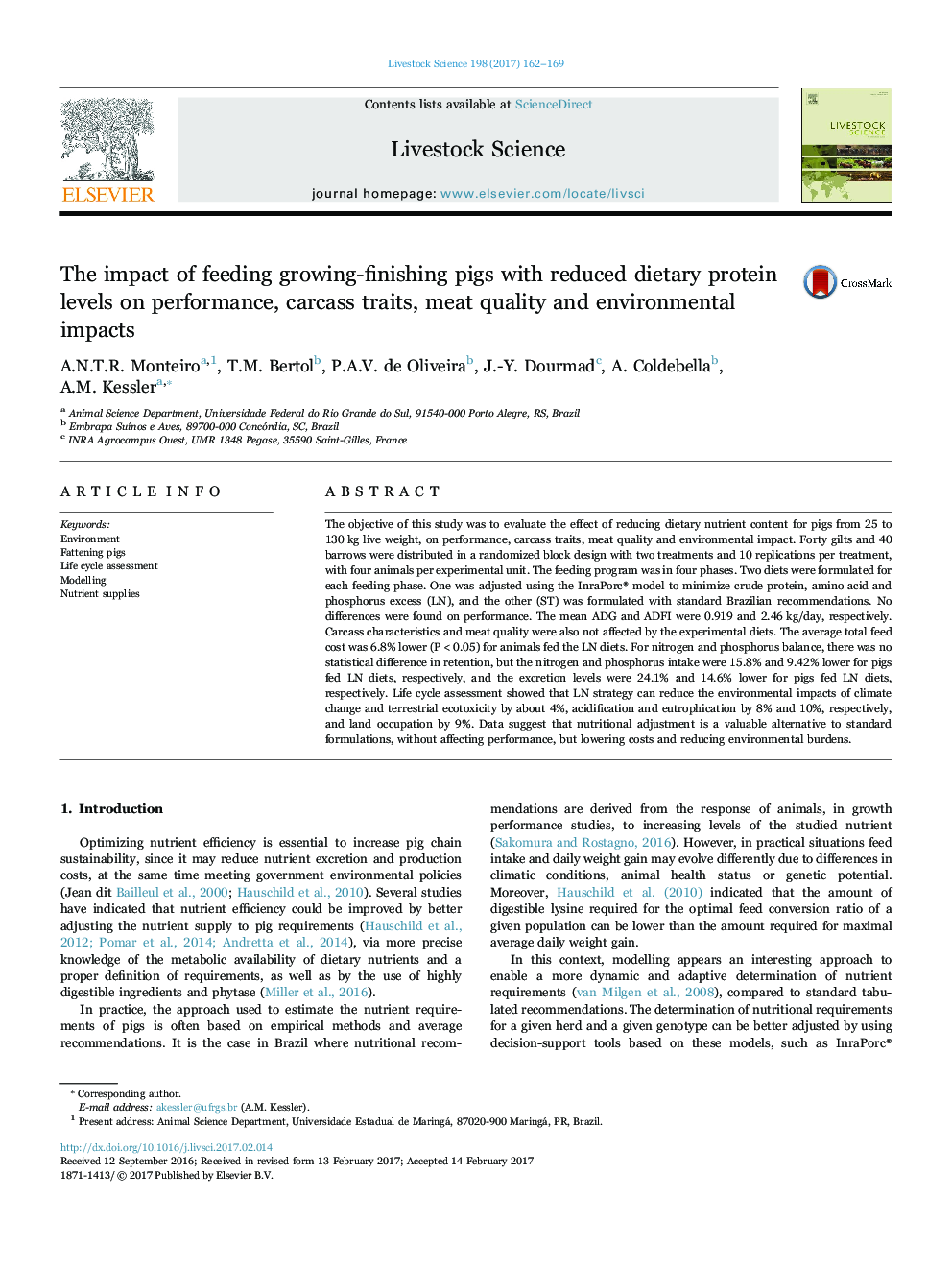| کد مقاله | کد نشریه | سال انتشار | مقاله انگلیسی | نسخه تمام متن |
|---|---|---|---|---|
| 5543145 | 1553934 | 2017 | 8 صفحه PDF | دانلود رایگان |
- Nutrient levels calculated InraPorc® software did not affect the growth performance.
- Feed cost and nutrient excretion decreased with these lower nutrient diets.
- Environmental impacts were reduced by using adjusted dietary levels of nutrients.
The objective of this study was to evaluate the effect of reducing dietary nutrient content for pigs from 25 to 130Â kg live weight, on performance, carcass traits, meat quality and environmental impact. Forty gilts and 40 barrows were distributed in a randomized block design with two treatments and 10 replications per treatment, with four animals per experimental unit. The feeding program was in four phases. Two diets were formulated for each feeding phase. One was adjusted using the InraPorc® model to minimize crude protein, amino acid and phosphorus excess (LN), and the other (ST) was formulated with standard Brazilian recommendations. No differences were found on performance. The mean ADG and ADFI were 0.919 and 2.46Â kg/day, respectively. Carcass characteristics and meat quality were also not affected by the experimental diets. The average total feed cost was 6.8% lower (P<0.05) for animals fed the LN diets. For nitrogen and phosphorus balance, there was no statistical difference in retention, but the nitrogen and phosphorus intake were 15.8% and 9.42% lower for pigs fed LN diets, respectively, and the excretion levels were 24.1% and 14.6% lower for pigs fed LN diets, respectively. Life cycle assessment showed that LN strategy can reduce the environmental impacts of climate change and terrestrial ecotoxicity by about 4%, acidification and eutrophication by 8% and 10%, respectively, and land occupation by 9%. Data suggest that nutritional adjustment is a valuable alternative to standard formulations, without affecting performance, but lowering costs and reducing environmental burdens.
Journal: Livestock Science - Volume 198, April 2017, Pages 162-169
